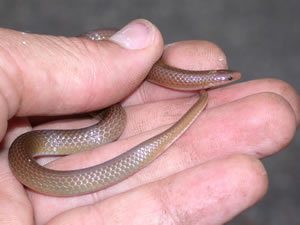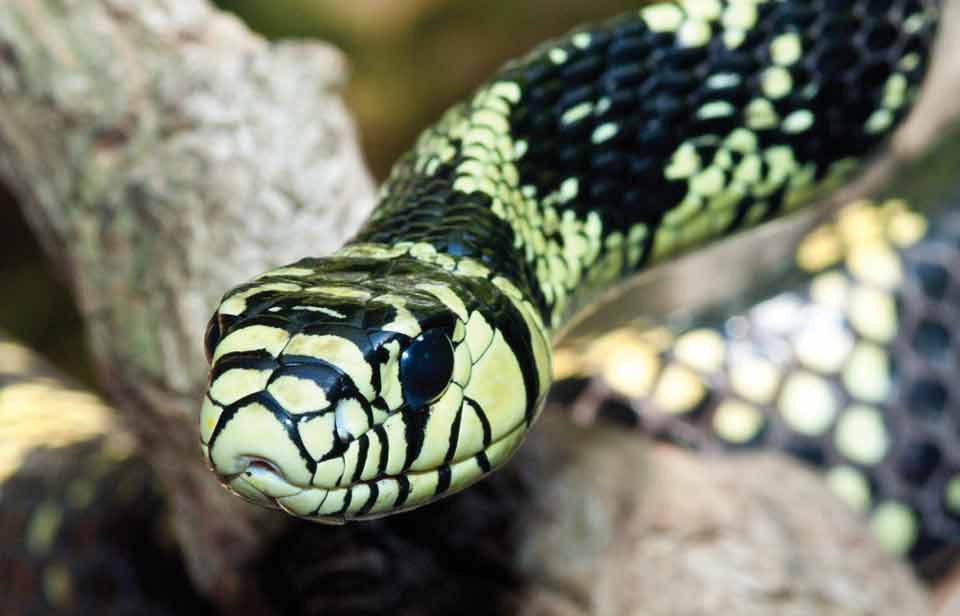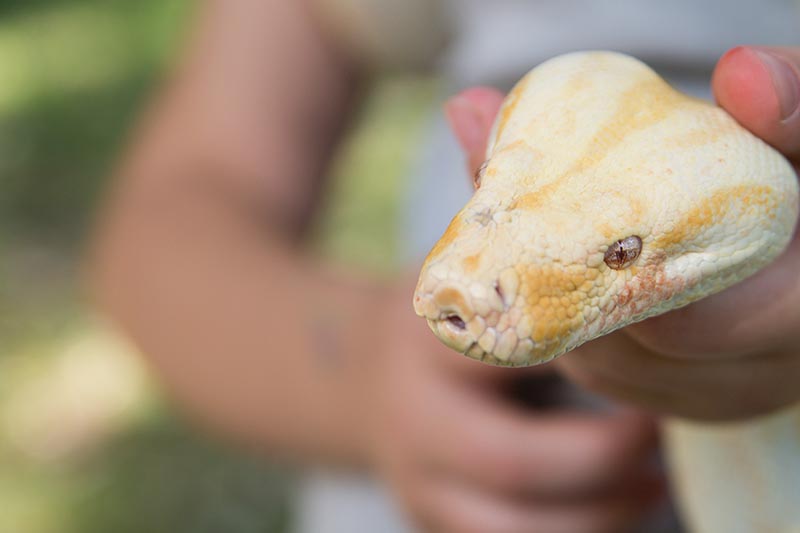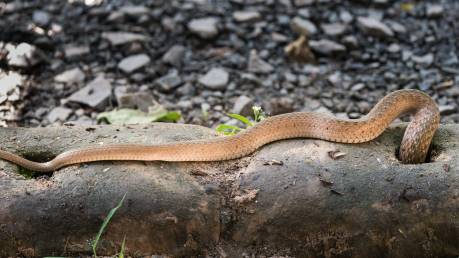Connect with a verified veterinarian in minutes. Licensed vets are available 24/7 to answer your questions. No need to worry about your furry family member.
Did you know that some baby snakes look a lot like worms? It’s true! Some snakes, when they’re very young, look more like worms than the snakes they’ll grow up to be. Most snakes do resemble their adult versions, but not the snakes included in this article!
Baby Snakes that Look Like Worms
1). Thread Snakes
These snakes are not venomous, which means they’re not dangerous to humans. Thread snakes are small and thin, truly resembling large worms. Their skin is very smooth and looks wet and shiny. When you look at the head of the snake, there aren’t any eyes. The spots you see are only dark spots where the eyes would normally be.
These snakes usually hide under things during the daytime. You may see them going across roads on warm nights, though. Thread snakes are indigenous to California.
There are two types of thread snakes: the desert thread snake and the Southwestern thread snake.
2). Brahminy Blind Snake
This is another snake that is not a native of California; it’s an invasive snake that has spread all around the world, including to the Hawaiian Islands and even in Florida. Because it’s sometimes mistakenly shipped in tropical plants, this snake is also called the Flowerpot Snake.
This snake resembles the thread snake but is a much darker color. It also has a dark eye spot, which is located in a different area than on the thread snake. They are burrowing snakes, with their head and tail looking the same.
They can also vary in color; they come in these colors: purple, silver, grey, yellow-beige, charcoal grey, albino (rare).
Blind snakes are usually about 2-4 inches in length, making them the smallest snake species in the world.
3). Cottonmouth Baby Snake
It’s easy to come across a baby cottonmouth snake and confuse it with a worm. But there are some distinguishing details that will let you know this is a cottonmouth, not a worm.
Did you know that cottonmouth snakes are born alive? Their tails are a bright yellow or yellow-green, which is not similar to most species of worms. The color of their tails helps to attract the baby cottonmouth’s prey, which includes frogs, small animals, lizards, and more.
As the snakes become older, the yellow on their tail will disappear. As an adult, this portion of the tail becomes black.
4). Baby Copperhead Snake
Baby copperhead snakes are very wormlike in their appearance. However, there are some features that give them away as being snakes rather than worms.
The babies have a yellow color at the tip of their tails; however, not all of them have this distinctive coloring. The head of the baby snake is a copper or reddish color and may have two black markings on the top of the head. Again, however, that’s not always the case.
The baby copperhead will pretend to be a worm in order to fool their prey. As they grow, the baby copperheads will lose their yellow tail tips, which will become an adult color.
5). Baby Rattlesnakes
Baby rattlesnakes do look different from their adult counterparts and could possibly be mistaken for worms. However, when you see the triangular head and the small knob on the tip of their tail, this is an indication they are snakes, not worms. The knob is where the rattle will form later as the baby becomes an adult snake.
Baby rattlesnakes maybe around 6 to 12 inches long and have dark markings on their body. However, the pattern is not clear. They do produce venom, which is used to paralyze their prey.
Can Baby Snakes Bite?
Yes, baby snakes can bite. What’s more, some of them are also venomous. If you’re bitten by a baby venomous snake, such as a rattlesnake, then it’s time to head to the hospital to be treated.

Review symptoms, medications & behavior to keep your pets healthy with a Vet Online in just minutes.
Ask a Vet Live NowWhat to Do If You Find Baby Snakes Near Your Home
It’s important to understand that most baby snakes do not stay with their hatchling siblings or their mother. Instead, they must start to fend for themselves, seeking out food and shelter.
Baby snakes are extremely vulnerable to the environment and to predators. For this reason, it’s possible you may find baby snakes hiding in your home. They can easily get through small cracks and gaps. While these little snakes may seem cute, they’re quite able to defend themselves.
If you do find a baby snake in your home, don’t panic. It’s important not to frighten them. They’ll only bite if you scare or corner them. If possible, try to open a door that goes outside and use a broom to gently “herd” the snake outside.
If the snake won’t go out, it’s small or coiled, then place an empty bucket or wastebasket over the snake. Do not injure the snake. You may, however, put weight on the bucket bottom to keep the snake inside until a handler arrives.
Now, call a handler to safely remove the snake and re-home it in a new location. This way, the snake will continue to live a useful life in nature, where it belongs. Many snakes help to keep down pests such as rats, mice, insects, and more.
How to Keep Snakes Out of Your Home
Here’s some information on how to keep snakes out of your home. You can keep baby snakes and snakes that look like worms from entering your home!
Remove food sources: snakes are drawn into the home or yard due to a food source. This could be rodents and other pests. Try to get rid of these pests, and remember to clean up bird food, pet food, and any other things that may attract rodents to your yard or home.
Eliminate shelter: snakes like to hide in undisturbed spaces. So, be sure to keep the yard mowed, weeds cut, and clean up debris that may be near the house or in the yard.
Use a snake repellent: you can buy snake repellent to use around the yard and your home. Snake repellent usually comes in a granular form and can be spread around the yard and your home to get rid of snakes.
There you have it! We took a look at some baby snakes that look like worms. It’s amazing they can sometimes be mistaken for worms. The key is to find those distinguishing marks that let you know it’s a snake and not a worm!
Connect with a verified veterinarian in minutes. Licensed vets are available 24/7 to answer your questions. No need to worry about your furry family member.

Julie
Julie is a graduate of the University of North Carolina, Wilmington, where she studied Animal science. Though contrary to the opinion of her parents she was meant to study pharmacy, but she was in love with animals especially cats. Julie currently works in an animal research institute (NGO) in California and loves spending quality time with her little cat. She has the passion for making research about animals, how they survive, their way of life among others and publishes it. Julie is also happily married with two kids.
Review symptoms, medications & behavior to keep your pets healthy with a Vet Online in just minutes.
Ask a Vet Live Now




